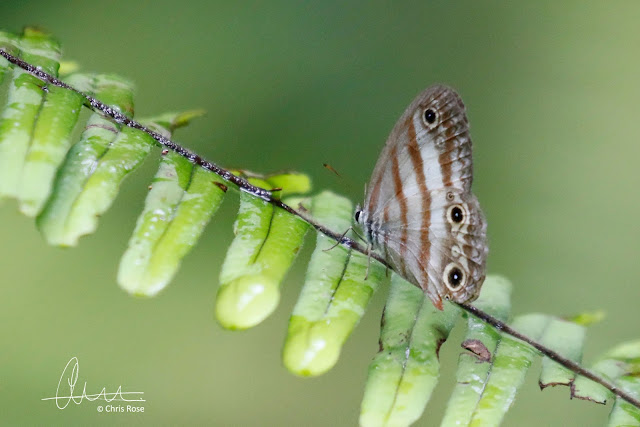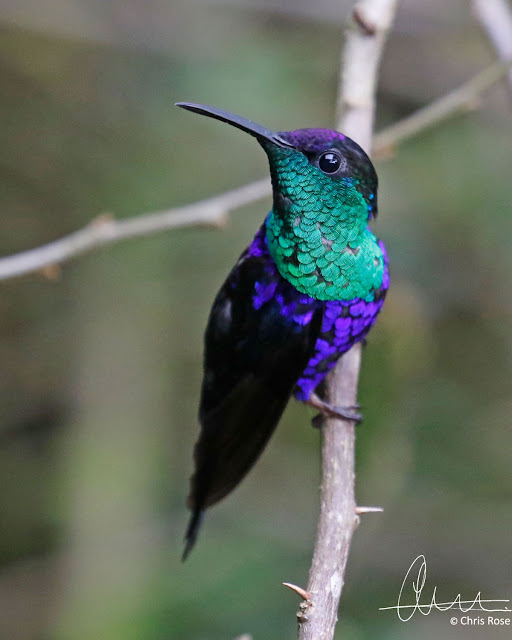This year our visit was just under two weeks earlier than previous trips, it would be interesting to see if this would have any impact on the weather and what we would be able to see from a wildlife perspective, two weeks should not make that much difference but you never know. The flights we re the same, direct from London Gatwick on British Airways, and there was the customary one night stay in the capital San Jose before setting off around the country. This year we were heading south east out of San Jose, stopping first on the Caribbean slopes around Tuis de Turriabla at a about 1,100 metres, then to a higher elevation of 2,600 metres in San Gerado de Dota, before heading down to the Pacific Coast at Quepos, then to the Osa Peninsula, and finally Uvita before returning to San Jose and home. Contrasting environments once again that will produce and variety of wildlife,some we are familiar with, and hopefully some we have not seen before.
We arrived on time, and the transfer to our hotel, the Gran de Oro in San Jose was quick and simple. After catching up on our sleep we had an early transfer in the morning which took just over two and half hours, taking us through Cartago, a town known for the Black Madonna shrine at Our Lady of the Angels Basilica, in the centre of the town. At this time of year, many Costa Ricans undertake a pilgrimage to walk to the cathedral from all over the country and even from surrounding countries, we encountered many of these walking pilgrims on our trip. It all culminates on the 2nd August, a religious holiday in Costa Rica, and is one of the most enduring Costarican traditions.
Our first destination was the Rancho Naturalista, a lodge set two kilometres up a track from the main road out of Tuis. The lodge is set in grounds with trails, and the highlight has to be the balcony over looking a garden filled with plants and flowers, and many hummingbird feeders. As we arrived and was shown to our room in the main building, hummingbirds were zipping past us, and we rushed to drop our bags and head off to watch the feeders.
There were several hummingbirds on the feeder outside our room, moving to and from the feeders, while in between settling on a favourite perch in a nearby bush. They provide the perfect positions for photography, and I began what became quite quickly a collection of many different pictures of the main species around the lodge.
A Rufous-tailed Hummingbird, one I had seen before, but not in the same level of detail that I would on this trip.
We made our way to the main balcony, and settled down to watch the activity. With the effects of the jet lag still with us, it was a lovely way to relax.
A Brown Violetear, we had seen this hummingbird on our trip last year, mostly in Monteverde
.
Then the first encounter with the most numerous hummingbird around the feeders, a male White-necked Jacobin.
And the female, lacking the striking colours of the male.
As well as the hummingbird feeders there were also small tables with bananas on them, and bananas attached to logs that were spread around the garden. With food in such supply it naturally attracts other animals, and a Coati, or Coatimundi came out of the bushes to take advantage of the fallen bananas. A member of the raccoon family it is usually foraging at night, but obviously knows where to get an easy meal.
All the meals were included for our stay, and they are served as the lodge likes to call it "family style", which is where we all sit down on one large table. The food throughout our stay was superb, and there was plenty of it.
Sitting down to lunch we still had a good view of the bushes and feeders, and it was on the verbena flowers, or to give it the Latin name, Stachytarpeta that we saw the hummingbird that the lodge is famous for, this one was a female Snowcap, not as striking as the male, but a good start, another first for me.
The Coati returned, this time climbing up on to the feeders to get to the bananas.
After lunch we returned to the balcony to continue our watch around the garden. A large Owl butterfly appeared, and settled on the ripening bananas.
There are many Owl butterfly species, the large eyes on the underside of the wings acting as a deterrent to would be attackers.
A member of the Toucan family, they have a slimmer bill than that of the well know Toucans. On the Caribeanean slopes here, you find the Collared Aracaris, moving across to the Pacific it is replaced by the Fiery-billed Aracari
The female Snowcap again, perched.
While here the male with the green in the upper wing.
A Two-Barred Flasher, a member of the skipper family, and a species I have encountered before
Back in the garden there were more butterflies to be seen.
A Plain Long-winged Skipper
A Grass Dart Skipper
A Tropical Yellow
Up in the dead branches I found a trogon, the old books about told me it was a Violaceous Trogon, however the species has recently been split based on vocalization data, and it has now been renamed as a Gartered Trogon, it is the only trogon found in Costa Rica with a yellow orbital eye ring, what you can not see here is the bright yellow belly.
The Clouds were rolling in around the hills, a sight we are familiar with from previous visits to Costa Rica.
White-necked Jacobin, male.
White-necked Jacobin, immature male.
Rufous-tailed Hummingbird.
Green-breasted Mango, a female, a first for me.
A male Violet-crowned Wood Nymph, wonderful names!
What we wanted to find though was the male Snowcap. We stopped by a large patch of verbena in the car park, at first an immature male. Here you can see the patches of reddish feathers on the upper parts, and a small patch of white on the cap.
We returned as the light faded to the balcony, the perpetual motion of the hummingbirds continued well after the sun has set and the light was fading.

























































No comments:
Post a Comment